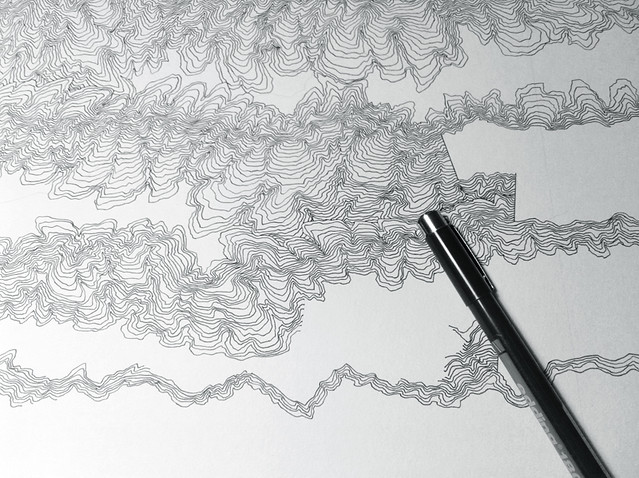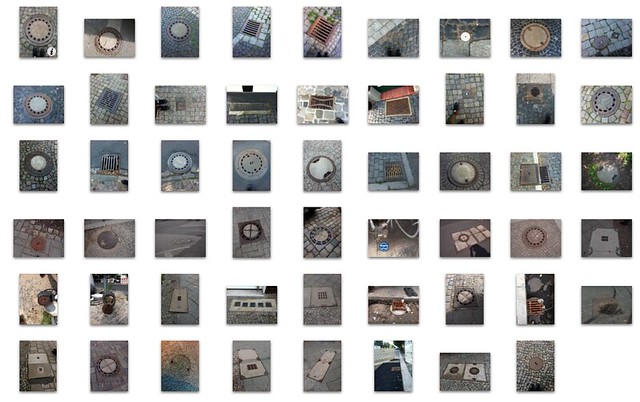Last month I rented a vehicle in London to pick up stuff from outside London and I was allotted a BRAND NEW VW Golf straight from the showroom, with a million buttons, bluetooth, sd card reader, digital DAB radio, all the bells and whistles. The pedals (manual) were super sensitive, and everything was still mysterious. This generally meant that everytime I panicked and hit the indicators and buttons, the windscreen wiper would fly about, lights would blink, and the car would make beep sounds, adding to the general confusion.
It was good that the man at the counter was really busy, so he did not see this mad wiper/light/car-jerking-stalling action right outside the huge shop window as I spent the next ten minutes trying to recall how to start up a manual car in Central London lunch hour traffic.
(Note: people who still remember my "getting-stuck-trying-to-go-up-UOB-carpark-slope-in-third-gear-at-peak-hour" story, this trumps even that incident, except this time around, no one was there to witness my mortification...)

The story is generally that it was supposed to be a really simple half-hour drive back from Victoria (the pickup point) and Stoke Newington (my old house), and I had studiously mapped the entire route out already with a marker on my little A-Z map while standing at the counter. But the car rental guy told me that I could avoid the congestion zone (and the £8 congestion charge) by going by some devious route around the zone. As he spoke, he pointed to my map and accidentally smudged my carefully drawn marker line, which was still wet. I should have taken this to be a portentous sign and driven through the congestion zone anyway, but in trying to take his advice to avoid the congestion zone, I missed a turning and found myself in the nether regions of Maida Vale (west London).
MORTAL TERROR! AND FRANTIC CONSULTING OF MINIATURE A-Z! Which, doesn't help very much while driving. So I just drove around in circles around Central, desperately trying to find a familiar east london road like Old Street or Kingsland Road...
THREE HOURS LATER... I finally got back to Stoke Newington, where I was still forced to park ten minutes from the house because no one is allowed to park outside the house without resident's permit (due to its proximity to Arsenal's football grounds...).
Do you ever wake up in the middle of the night, wondering if your car parked a few blocks down has begun spontaneously combusting while you were away? I suppose for sanity's sake I better not buy a car in London if/when I move back there...
All I can say is that the experience as a pedestrian in London was much more pleasant than as a driver in London, where the roads are tiny, the road diversions are many, and the name of the road you are on is often not apparent as the only thing that is clearly signposted are the names of the roads running perpendicular to the road you are on. There is also nothing pleasurable about the start-stop driving with a manual car on small cramped London roads, plagued with construction boulders, unruly black cabs (one clipped my mirror, but no damage was done), and swarms of unpredictable cyclists. Fortunately my friend was much more steady at driving than me, so she helped me drive around on the other days.
I used to feel 'crippled' in the sense that I felt I couldn't afford to take too many cabs in London, yet the buses were wont to be late at times, or the tube might stop working, or some other public transport disaster might interfere with your onwards journey. So one might be late for something even despite one's best intentions, because of not being able to access the roads with a car. In Singapore I feel like I can get anywhere instantly because if the need arises I can afford to take a cab, and it will get me there as soon as possible. But after this driving experience... I have no idea how people even manage to get where they are going in London. The roads... are a nightmare. How does London even function? How do drivers and businesses cope with the massive jams and road diversions? This is a mystery to me...
But enough with the digression - what I meant to say is, I've never actually had a car all to myself before. Although i've previously driven VW campers and large transportation vans before, I guess driving other people's vehicles doesn't really count. So this makes it my first car, even if just for a weekend... and surely this is worth a photo moment:

MY FIRST CAR!











 Unfortunately, that was when I learnt that Kartoffel meant potato.
Unfortunately, that was when I learnt that Kartoffel meant potato.



